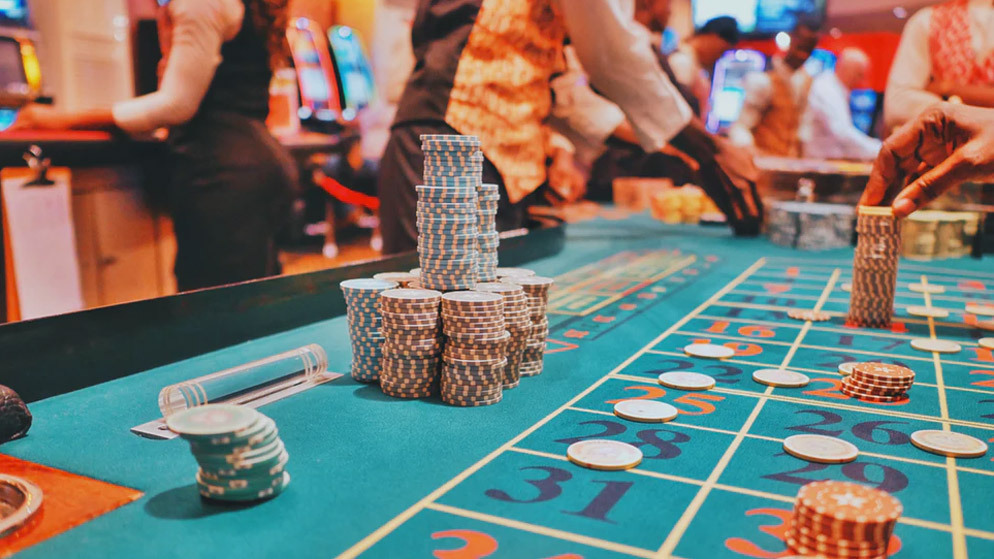The Cultural Impact of Gambling Games Worldwide
Gambling games have long been a captivating source of amusement, drawing millions of players from diverse cultures around the globe. From the opulent casinos of Las Vegas to the thriving gambling halls of the Cotai Strip, these games serve as a common thread that unites people across various backgrounds. The allure of chance, skill, and risk entices not only those hoping to strike it rich but also those seeking a feeling of belonging.
The cultural impact of casino games extends well beyond the gaming floor. They often embody the cultural standards and beliefs of the cultures in which they flourish. Games such as poker, pontoon, and the wheel game have integrated into the tapestry of mainstream culture, influencing everything from movies to fashion. As we explore this fascinating intersection of chance and culture, we can comprehend better how gambling games shape and are shaped by the surrounding world.
Historical Evolution of Gambling Activities
The origins of casino activities can be tracked back to ancient civilizations, where gambling in different forms was extensively practiced. trò chơi hot tại mmlive mmlive In the East, around 2300 B.C., a type of lottery known as Keno was well-known, while in historic the Roman Empire, soldiers would regularly gamble on the consequences of their contests. The notion of using chance for amusement and gain progressed over the years, leading to the creation of more organized activities. By the final Middle Ages, betting houses initiated to surface in the continent, particularly in the Italian peninsula, which presented early versions of popular games still played today.
As gambling expanded recognition in Europe, the 17th and 18th centuries saw the rise of gambling establishments as dedicated locations for gambling. The earliest official gaming venue, the Ridotto, was established in the city of Venice in the year 1638, offering games like Baccarat and Faro. This period marked a major turning point, as gaming venues began to welcome not just the wealthy but also the burgeoning middle-tier society. The complexity of activities grew, leading to the introduction of new rules and versions that enhanced the gaming experience.
In the 19th century, the industrial age and changes in social standards also altered the terrain of gambling activities. The introduction of the game of roulette and modern one-armed bandits pulled in a larger audience, and gambling establishments became seen as acceptable recreation. This era witnessed the international spread of gaming, as casinos expanded from the continent to the Americas, culminating in the development of the famous Las Vegas Strip in the 1900s. The evolution of casino activities has continued into the present day, including modern technology and online platforms, making them available to a worldwide market.
## Cultural Relevance across Various Communities
Casino games have deep-rooted social importance within numerous societies across the world. For instance, in Las Vegas, the very core of the city is woven around gaming venues, where playing is not just a hobby but a key aspect of leisure and community life. The bright lights and vibrant atmosphere attract a vast audience, showcasing how gambling activities can influence local financial landscapes and cultural identities. This setting transforms the notion of relaxation into an enriching encounter that affects style, melodies, and even film.
In contrast, some communities treat gambling with an air of caution, considering it through the lens of morality and heritage. For instance, in various Eastern societies, games like Mahjongg and Pai Gow Gambling are steeped in history and possess significant social meanings. These games are often played during gatherings and occasions, fostering community bonds and solidifying kinship ties. The act of participating in these games goes beyond mere amusement, reflecting principles such as respect for elders and the value of collective enjoyment.
At the same time, in Western countries such as Monaco and Italy, gambling activities serve as symbols of wealth and sophistication. The elegant atmosphere of these establishments attracts both visitors and locals, reinforcing a sense of status and elitism. The art of Texas Hold'em and the strategic elements of games like banker’s game are appreciated, influencing community relationships and establishing an allure that captivates a diverse audience. This underscores how gambling can concurrently mirror and shape cultural perspectives towards hazard, gain, and social interaction.
Financial Influence and Tourism
Casino games play a crucial role in the financial context of many regions, particularly those that depend significantly on visitor traffic. The revenue produced from gambling establishments fuels local economies, creating employment opportunities not only within the casinos but also but also in related sectors such as hotel management, dining, and entertainment. This surge of tourists, drawn by the attraction of gambling and the overall casino experience, stimulates spending across multiple local enterprises, contributing to the economic vitality of the region.
The existence of casinos often leads to the construction of facilities, including lodging, public transit, and recreational facilities. These improvements are essential in improving the overall tourist experience, making locations more attractive to tourists. Additionally, many casinos contribute in local communities through sponsorship of events and philanthropic initiatives, further integrating themselves into the social fabric of the region. Such investment not only supports economic growth but also cultivates a positive reputation of the gambling sector.
In addition, the global popularity of casino games drives competitive tourism, with regions vying to attract players from around the world. Iconic locations like Las Vegas and Macau have become synonymous with casino culture, drawing millions annually. This competitive edge encourages creativity and diversification within the gambling sector, influencing developments in leisure and accommodation that extend beyond their limits. The ripple effects of this visitor influx extend wide, impacting local economies and cultural exchanges on a global scale.

